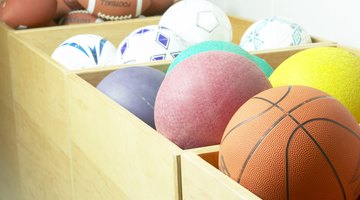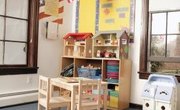Excusing visually impaired students from physical education classes has been acceptable practice for many years, but there is simply no need for students with visual impairments to miss out on all the benefits that come from exercise. If teachers make just a few modifications to the environment and their instructional practices, blind and visually impaired students can participate in physical education classes with their peers.
Environmental Modifications

Paying attention to the environment is the best way to ensure the safety of visually impaired students in physical education classes. Students should begin class by touring the area with a sighted guide who will point out the location of equipment and furniture. Practice areas should be kept free of clutter, and the teacher must prepare students for flying objects, like balls. If major changes are ever made to the environment, the student should have time to tour and reorient.
Equipment Modifications

Visually impaired students participate more fully in physical education classes when mobility tools and specialized equipment are available. Some students will come to class with their own tools, such as a walking cane or a guide dog, and these should be incorporated into the lesson. Other modifications may include lesson-specific tools, like guide ropes for running or larger equipment. When possible, the student should use light-colored equipment -- white, yellow and orange are excellent choices.
Instructional Modifications

Auditory cue-giving is the primary instructional modification for visually impaired students in physical education classes. Instructors should give detailed verbal instructions that state specifically what the student is expected to do. For example, "walk toward me" becomes, "walk forward until you touch my hands." Verbal narrative should be given during times that other students would use visual cues to follow along, like during stretching. Auditory cues, like bell ringing, are used to signal when it is time to begin or end an activity.
Support Modifications

Support modifications like assigning a sighted buddy or providing a full-time instructional assistant ensure a visually impaired student's safety. The level of support should be determined on an individual basis, but the physical education class is a time for students with visual impairments to practice their independence and work on their mobility. Support providers should only offer assistance when it is necessary so that the student does not become overly dependent upon the help.
Related Articles
References
Writer Bio
Based in Sacramento, Calif., Beth Wenbourne Katz has been writing about education topics since 2006. Katz has taught in the California public schools, working primarily with students with learning, behavioral and emotional challenges. She holds a Master of Arts in special education from San Diego State University.










